The internet is obsessed with watching pretty girls eat
Pleasure and fantasy through digital consumption
Hi. Happy October, the best month of the year.
This essay has been marinating for a while after I had coincidental conversations with two of my friends about how eerie food content has gotten, especially the kind that comes from the kitchens of internet it-girls.
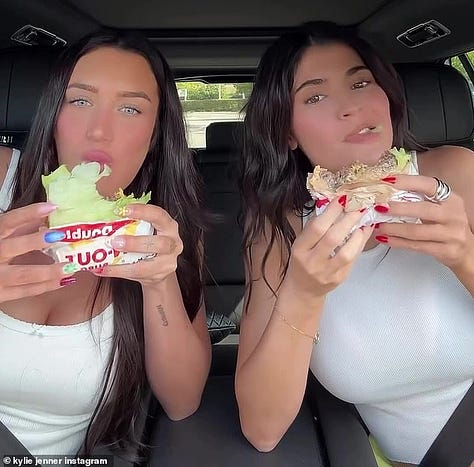

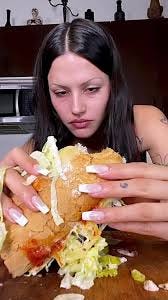
This is Part One. The next letter will pick up where I left off.
Before the age of Nara Smith, I followed Kelsey Calemine, known in the late 2010s as @fatherkels. She was a Kylie Jenner-adjacent influencer with a secondary food account called @fatherfoods, where she posted photos of dishes she ate at restaurants in Los Angeles—think luxurious plates of pasta, gleaming slices of sashimi, ice cream sundaes. A part of her allure, I think, was that this young Instagram model was eating out all the time and enjoying food decadent, expensive food while remaining thin, beautiful, and carefree. In 2020, she wiped the account and introduced a venture called Father Foods, a ghost kitchen that delivered sandwiches with names like “I’m Hooked” and “That’s Fire” around LA.
There was nothing particularly special about the sandwiches (most were variations of classics like tuna melts or turkey clubs), and Kelsey herself had no background as a chef. The business rested upon the foundation that Kelsey was hot, had a large following, and loved food. The social media promo for Father Foods featured videos of her and her friends posing in lingerie, taking bites of bananas, cupcakes, and sandwiches with cloying eyes, in slow motion.
Based off of the Instagram, Father Foods only lasted from August to November 2020, and Kelsey laid off the food content. But after the pandemic, Kelsey blew up on TikTok for videos of her eating. Much of the sex appeal is gone—in most videos, Kelsey is in a bathrobe and glasses, unboxing the takeout she’s ordered to her home. People are drawn to her relatability and the sense of comfort she provides around eating.
Most recently, Kelsey’s Instagram has been employing a different strategy, in line with Sydney Carlson’s (who is in the same LA influencer friend group). Both women have started to create Nara Smith-esque cooking content. They stand in pristine kitchens wearing lacy, floral, feminine dresses and full glam. There is little-to-no talking. The production toes the line between “I just set up my iPhone tripod” and “I hired a full team to make this 15-second video.” They may be trying to hop on the tradwife trend, but they are 25-year-old unmarried women living in a massive city. Sydney runs her own phone case business with her family and just launched a cookware brand called Lynne. Both women are successful creators outside of their involvement in the food space. So why are they wearing the (metaphorical) apron, as if there’s a family to feed on the other side of the camera?
And then there’s Gabbriette. I discovered her on TikTok in the spring—she was making some sort of grain-free fruit cake. I was more entranced by her eyeliner and long, black hair than the dessert she was making. She was scary; I didn’t really want to eat anything she invented, but at the same time, I couldn’t look away. In
’s video titled erewhon hauls, ozempic, and chefluencers, she says of Gabbriette that “it seems like she’s actually interested in making food that she wants to eat, not food that she’s supposed to eat.”Women have been told their whole lives that if they want to be attractive, they have to follow restrictive, extreme, “healthy” diets to obtain society’s ideal figure. But Gabbriette, Sydney, and Kelsey aren’t like the Victoria’s Secret Models or gym rats who post food content strictly concerned with nutrition and macros. They don’t make steamed chicken and vegetables, they make casseroles and mashed potatoes and vodka pasta. But they still look like models. I’m reminded of the 2000s supermodels who claimed they only ate burgers and pizza when interviewers asked them about their diets, despite the fact that they probably had personal trainers, nutrition plans, and devoted the majority of their time and resources to cultivating their physique (because their appearance was their livelihood).
In the age of Ozempic, most of the celebrities in Hollywood have become unnaturally thin, almost gaunt. The Kardashians are shrinking at the same time Kylie Jenner has been leaning into food content, filming herself eating In-n-Out and Crumbl cookies with her friends. Gabbriette was recently featured in a British Vogue video where she makes scrambled eggs and toast, takes a small bite, and recites the mantra behind why she loves cooking in her cool-girl monotone: “Food makes people happy, plus eating is sexy.” I think something more sinister might be underneath all of this.
These LA female influencers are creating a fantasy that is both addicting and unnerving to watch. They have access to fresh produce, ample time to cook luxurious meals in their kitchen, and the financial means to order takeout and visit restaurants all the time. They never talk about their health, or their appearance, despite the fact that they are getting smaller and smaller. Their beauty drives views to their content, which enables their viewers to also consume abundantly and extravagantly, just through their screens.
Pete Wells served as the restaurant critic for the New York Times for twelve years and writes in his departing letter that no one talks about the physical consequences of dining out at the level he was required to for his job. He cites his own diagnoses for high cholesterol, pre-diabetes, fatty liver disease, and technical obesity as reasons for quitting.
While male critics tend to die before retirement age, women are able to sustain longer careers. They eat smaller portions; they don’t finish their plates. They bring men along to eat their leftovers. A female critic with a 40-year career explains that “I just take little bites of this and that. I never finish a plate in a restaurant,” she said. “If I finished my plate, I would just be 300 pounds.”
Wells did not take this dainty approach—he saw eating as a way to get better at his job, and he fully committed to it. But Wells’ appearance was never a factor in who saw or respected his work; we just read his words. In fact, his looks were so divorced from his reviews that he went through elaborate measures to not be recognized—like reserving tables under false names and wearing funny disguises.
Wells’ resignation letter is forthright and unexpectedly touching. Dining out is a luxury, especially in New York, but when that luxury becomes comped by your employer and embedded into your daily routine and a source of a mutiny of health issues, it loses its shine.
Women who create food content on social media fulfill two of our desires—attractiveness and indulgence. We expect them to stay beautiful, thin, charismatic and youthful. Typical comments sound like I would never be able to eat like that and look like them. But like the female food critics, maybe they don’t. We have no idea what happens when the camera turns off.
It’s an impossible situation. You have to be thin, but you can’t ever talk about going on a diet, or taking Ozempic. You must love food and prove that you eat, but you can’t gain weight. You have to be alluring, but not overly sexual. And you can’t admit that you’re under any pressure at all, for that would break the fantasy.
So she smiles, puts on her lacy dress, and cooks a burger and fries from scratch. She takes a big, juicy bite and smirks at the camera. The video cuts to the black.
In Part Two, I’ll be talking about how food is no longer…food.
Have a wonderful week.





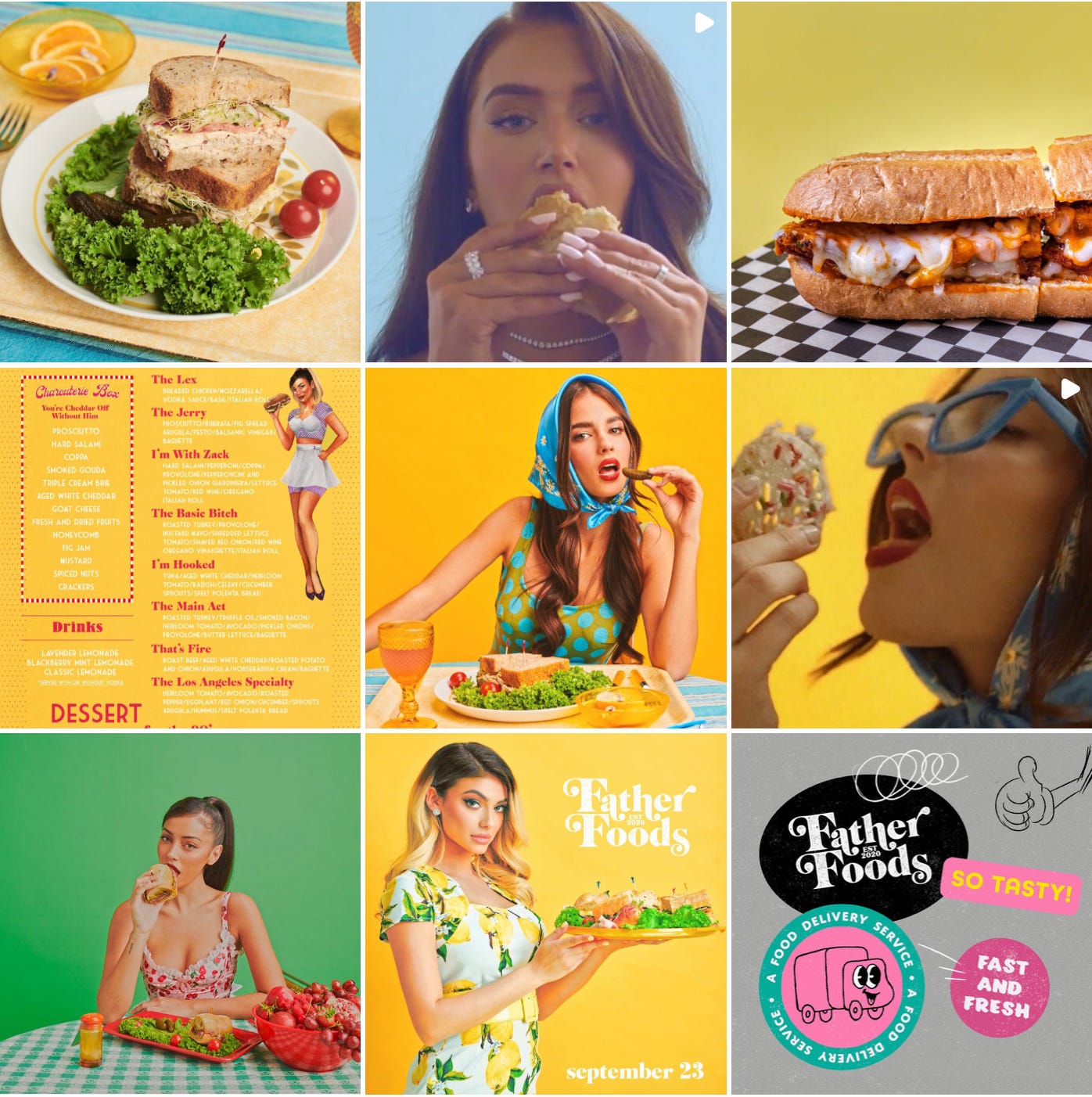
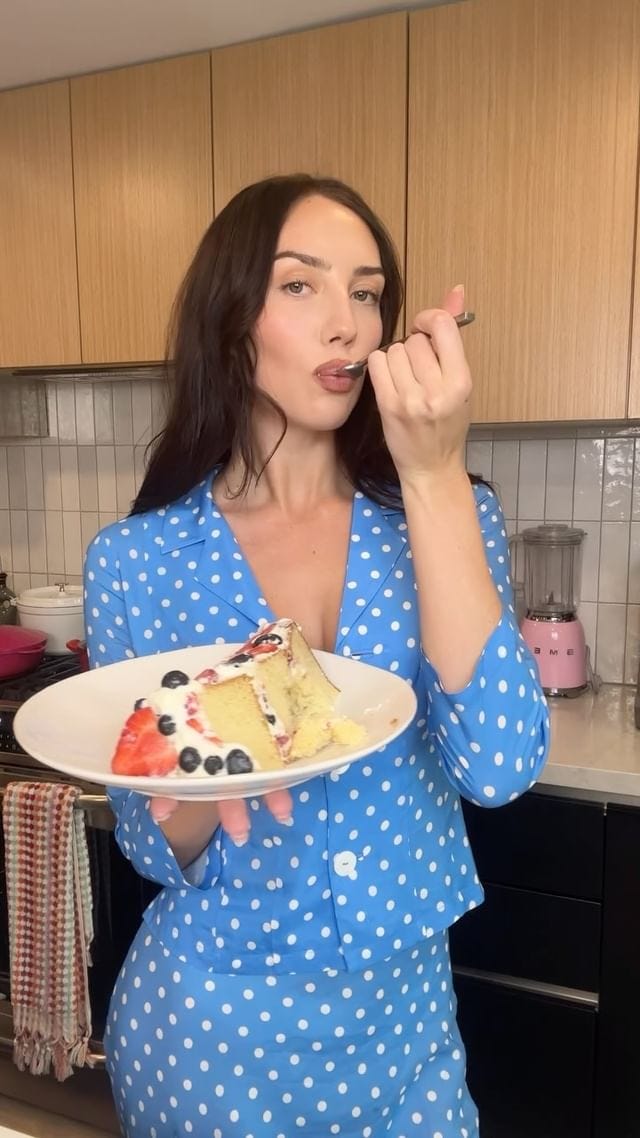

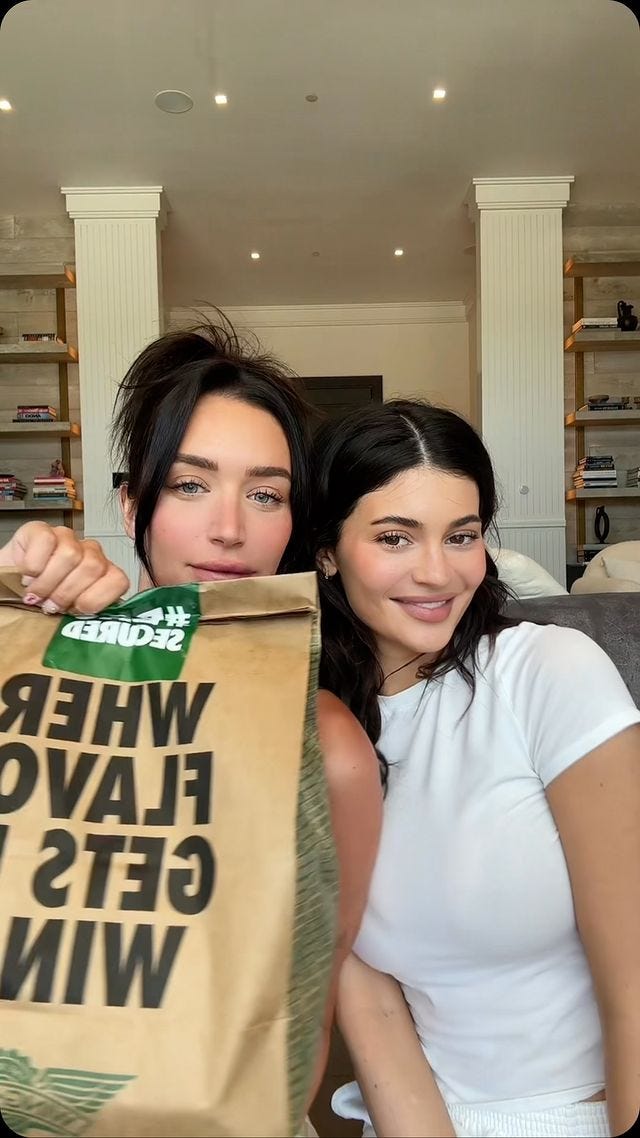

Food content has existed in this paradox for a while — I’m surprised you don’t touch on mukbangs here (but maybe that’s covered in the next one). People usually do catch on that a fantasy is being sold when they watch a pregnant woman make cereal from scratch in a pretty gown but the allure is still there. Whether it’s watching pretty girls create elaborate meals or just photos of dinner plates at a new restaurant every day, there’s the implication that food is a luxury, which of course it isn’t—but maybe that emerging belief is the byproduct of a culture that promotes disordered eating for the sake of beauty.
Love. Seeing this trend emerge has been wild. It’s just socioeconomic inequality porn. Like you said, it’s not just about how much of the food they eat. It’s the ingredients, the time & the money. People can’t stop watching bc they have what many people don’t, which is disposable income, time & a big big kitchen.
Also love the inclusion of Pete Wells too - I’d not heard about the impact of his job on his health. Can’t wait for part 2!!